When it comes to eating healthy, many people focus on avoiding the obvious culprits — fast food, soda, and sugary desserts. But what often slips under the radar are processed foods that disguise themselves as healthy choices. Found in nearly every grocery store aisle, these items are cleverly marketed to appear wholesome, nutritious, and even essential for a balanced diet. Unfortunately, many of them contain hidden sugars, excessive sodium, artificial additives, and unhealthy fats that can quietly undermine your health over time.
The tricky part is that these foods are often labeled with buzzwords like “low-fat,” “gluten-free,” “heart-healthy,” or “natural,” giving the illusion of being better-for-you options. From your breakfast bowl to your afternoon snack, many everyday items fall into this category — foods we reach for out of convenience, habit, or simply because they’re familiar. But behind the appealing packaging and health claims, some of these processed products are far less beneficial than they seem.
In this article, we’ll highlight 13 processed foods that may seem harmless — even helpful — but are actually best left on the shelf. Whether you’re trying to lose weight, boost your energy, or simply eat cleaner, knowing what to avoid is just as important as knowing what to include in your diet. Let’s take a closer look at the everyday items that could be silently sabotaging your health.
1. Sugar-Coated Betrayal: Flavored Yogurt
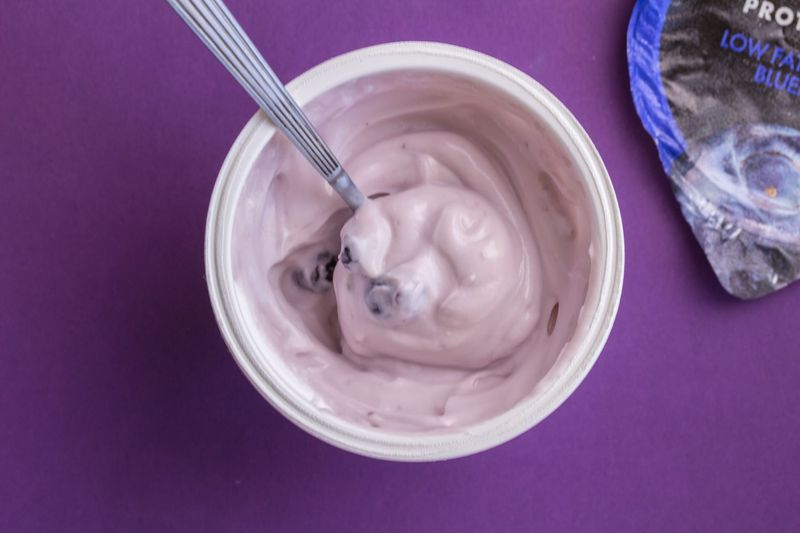
That colorful yogurt cup promising fruit-filled goodness actually hides a sugary secret. A single serving can contain up to 7 teaspoons of added sugar – that’s more than half the daily recommended limit! The fruit pictured on the label? Often replaced by artificial flavors, colors, and a tiny amount of fruit concentrate. Many brands also sneak in thickeners, preservatives, and modified corn starch to create that creamy texture and extend shelf life. The healthy probiotics manufacturers boast about can’t compensate for this sugar overload. Your body processes these added sugars rapidly, causing energy spikes followed by crashes. For a healthier alternative, choose plain yogurt and add fresh fruit, a drizzle of honey, or a sprinkle of cinnamon for natural sweetness. This simple swap cuts sugar dramatically while preserving yogurt’s calcium and protein benefits.
2. Candy Bars in Disguise: Granola Bars
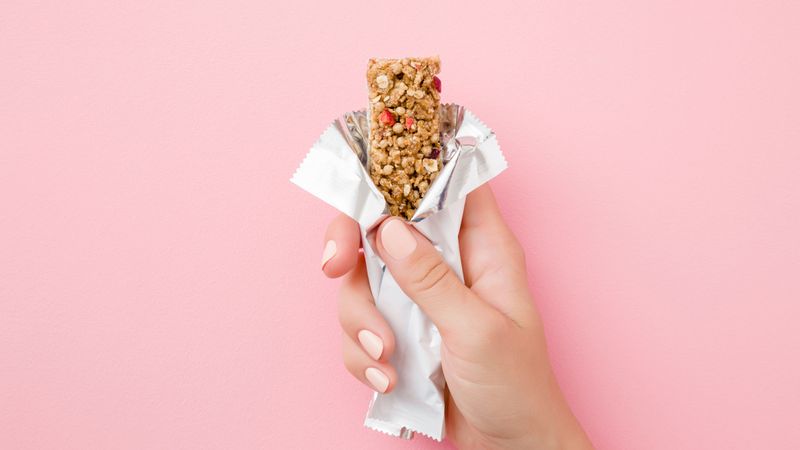
Marketing wizards have convinced us these convenient snacks are wholesome energy boosters. The truth? Many popular granola bars contain more sugar than chocolate candy! Wrapped in earth-toned packaging with images of oats and honey, these bars masterfully hide ingredients like high fructose corn syrup, palm oil, and artificial flavors. The ‘yogurt coating’ on some varieties is actually a blend of sugar and hydrogenated oils – the same ingredients found in frosting. Even protein-enhanced versions often compensate for taste with artificial sweeteners and sugar alcohols that can cause digestive distress. Most commercial bars provide minimal fiber despite their whole grain claims. Create your own healthier version by mixing oats, a small amount of honey, nuts, and dried fruit, then baking until crisp. Your homemade alternative delivers actual nutrition without the chemical cocktail and excess sugar.
3. Morning Sugar Rush: Instant Oatmeal Packets
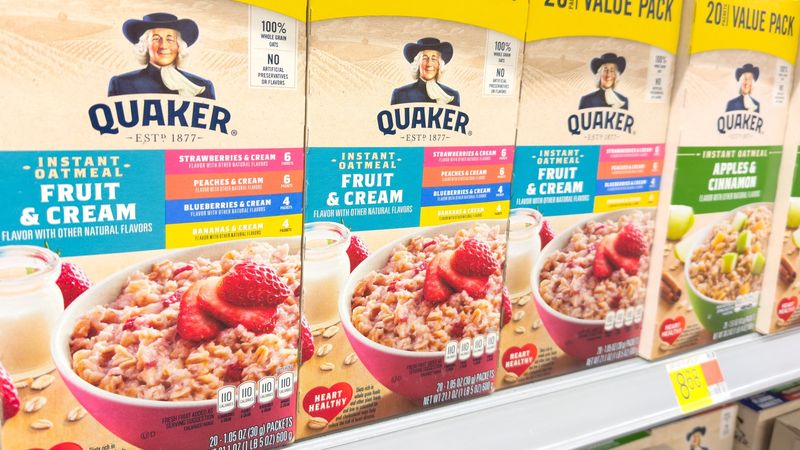
Those convenient little packets promising a quick, nutritious breakfast deliver a very different reality. The average flavored instant oatmeal contains 3-4 teaspoons of added sugar per serving, transforming a heart-healthy grain into a dessert-like breakfast. Manufacturers strip away the oat’s fibrous outer layer during processing, significantly reducing its nutritional value. The fruit flavors rarely contain actual fruit – instead, you’re getting artificial flavors and colors. Most varieties also pack concerning levels of sodium, with some containing more salt than a serving of potato chips! The processing method creates oats with a higher glycemic index, causing faster blood sugar spikes than traditional oatmeal. Switch to steel-cut or rolled oats instead. They take just minutes longer to prepare but retain more fiber, protein, and nutrients while allowing you to control exactly what goes into your breakfast bowl.
4. Preserved to a Fault: Deli Meats
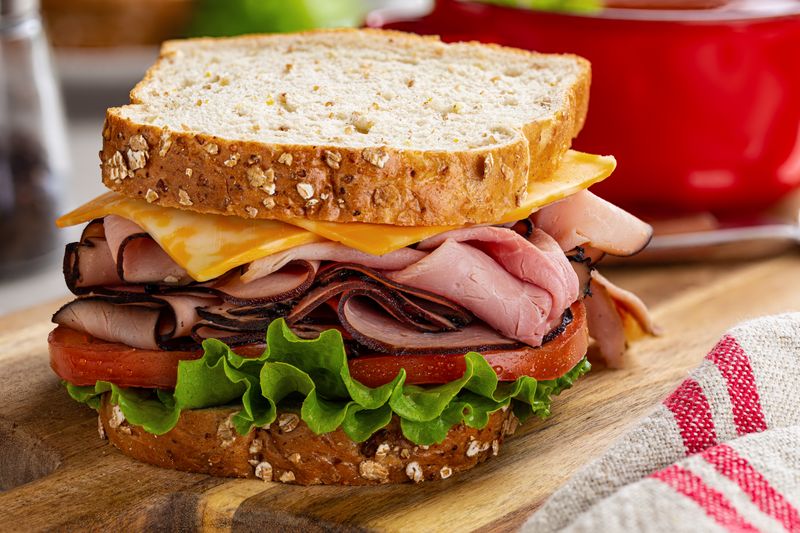
Those perfectly round turkey slices bear little resemblance to actual poultry. Modern deli meats combine meat scraps with water, salt, sugar, and binding agents before being molded into those uniform shapes. The appealing pink color comes from sodium nitrite and nitrate preservatives – compounds linked to increased cancer risk when consumed regularly. A typical serving of deli meat contains around 500mg of sodium – nearly a quarter of your daily limit in just a few slices! Many varieties also contain hidden sugars, contributing to their addictive taste. The processing destroys much of the meat’s natural nutritional value while adding concerning chemicals. For healthier sandwich options, try roasting and slicing your own chicken or turkey breast. Alternatively, consider plant-based fillings like hummus, avocado, or nut butters. These whole-food alternatives provide better nutrition without the chemical preservatives and excessive sodium found in processed meats.
5. Fraudulent Health Food: Veggie Chips
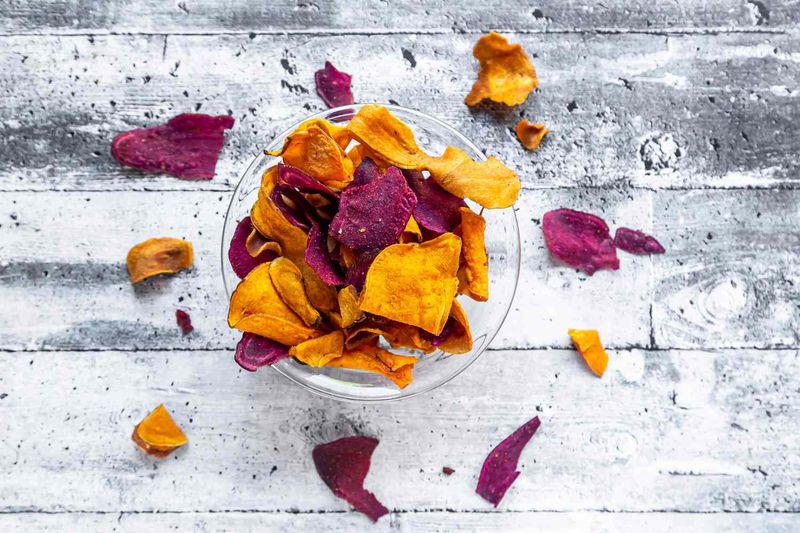
The vibrant colors and vegetable names might fool you, but these crunchy snacks offer virtually none of the nutritional benefits of actual vegetables. Most veggie chips contain only a dusting of vegetable powder for color and marketing appeal. The primary ingredients? Usually potato flour, corn oil, and salt – nearly identical to regular potato chips. Manufacturing involves deep-frying or baking at high temperatures, which destroys whatever minimal nutrients the vegetable powders contained. The calorie count and fat content typically match or exceed traditional potato chips, despite the health halo these products project. Some brands even add extra sodium and artificial flavors to enhance taste. For a genuinely healthy alternative, try making baked kale chips, thinly sliced baked sweet potatoes, or air-fried zucchini rounds. These homemade options provide actual vegetable nutrition along with that satisfying crunch you crave, without the processed ingredients and empty calories.
6. Liquid Deception: Protein Shakes & Meal Replacements
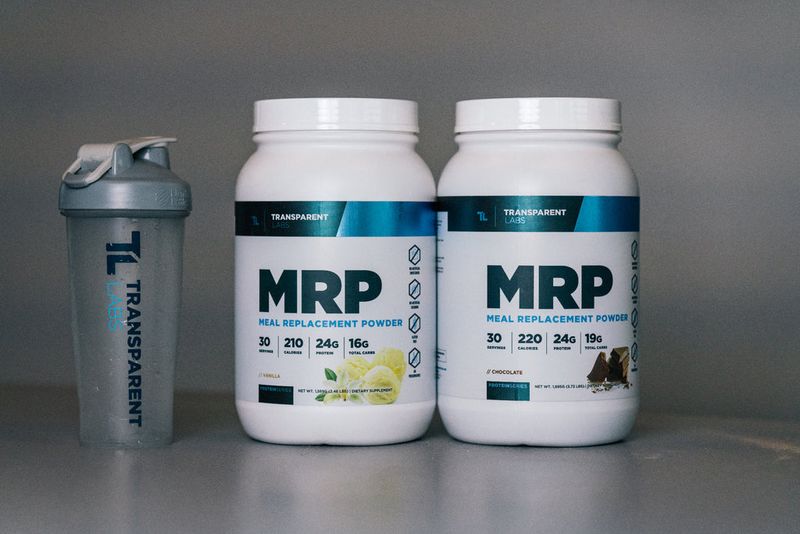
Those muscle-building promises on the label hide a formula closer to liquid candy than nutritional powerhouse. Many commercial protein drinks contain artificial sweeteners like sucralose and acesulfame potassium, which research suggests may alter gut bacteria and potentially increase cravings. The creamy texture comes from carrageenan and other thickeners linked to digestive inflammation. Cheap protein sources like soy protein isolate undergo heavy processing with chemicals like hexane. The vitamin content sounds impressive until you realize these are synthetic versions that your body struggles to absorb properly. Many brands add excessive amounts of these nutrients to create impressive-looking labels while your body excretes most of the excess. For genuine nutrition, blend whole foods like Greek yogurt, a banana, natural nut butter, and a small scoop of unflavored whey or plant protein. This approach provides complete nutrition from real food sources your body recognizes and can properly utilize without the chemical additives.
7. Chemical Butter Bomb: Microwave Popcorn
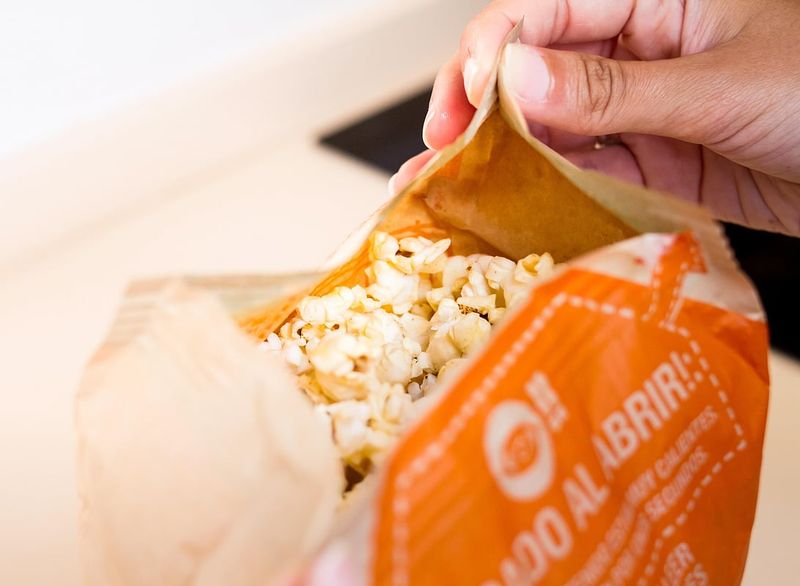
That convenient popcorn bag hides some troubling secrets beneath its buttery aroma. The fake butter flavoring contains diacetyl, a chemical linked to serious respiratory problems when inhaled regularly. The bag itself often contains PFAS (per- and polyfluoroalkyl substances) – chemicals that migrate into the popcorn when heated and have been associated with hormone disruption and immune system damage. Many brands still use partially hydrogenated oils despite their link to heart disease. The salt content can be extreme, with some brands packing nearly 500mg of sodium per serving. The seemingly innocent ingredients list becomes more concerning when you realize terms like ‘natural flavors’ can legally include dozens of undisclosed chemical compounds. Try buying plain popcorn kernels instead. They pop easily in a covered pot or inexpensive air popper, allowing you to add real butter, olive oil, or seasonings of your choice. This simple switch eliminates dangerous chemicals while saving money and creating a truly wholesome snack.
8. Sodium-Packed Illusion: Frozen Diet Meals
Those neatly packaged frozen diet dinners promising weight management deliver disappointment on multiple levels. Despite their calorie-controlled portions, most contain excessive sodium – often 30-40% of your daily limit in one small meal! This high salt content helps mask the bland flavor of poor-quality ingredients while extending shelf life. The vegetables inside have typically been flash-frozen months ago, losing nutrients during processing and storage. Many meals feature meat ‘formed’ from pieces bound together with additives. The sauce covering everything often contains modified food starch, partially hydrogenated oils, and artificial flavors. A healthier approach is batch-cooking real meals on weekends and freezing portions for busy days. Try simple combinations like baked chicken with roasted vegetables and quinoa, or bean and vegetable stew with brown rice. These homemade alternatives provide better nutrition, more satisfying portions, and significantly less sodium and additives than their commercial counterparts.
9. Oil Slick in a Bottle: Commercial Salad Dressings
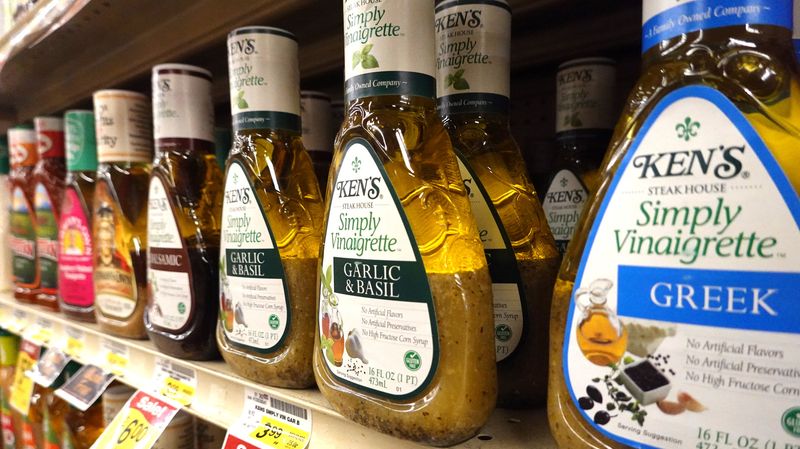
The ultimate irony sits in your refrigerator door – chemical-laden dressings destroying the nutrition of your healthy salad. Most store-bought varieties use low-quality vegetable oils like soybean or canola as their base, which oxidize easily and may promote inflammation. The smooth, never-separating texture comes from emulsifiers and stabilizers like xanthan gum and polysorbate 60. Even ‘light’ dressings compensate for reduced fat with extra sugar, salt, and artificial thickeners. The bright, shelf-stable colors come from synthetic dyes like Yellow #5 and Red #40, which research has linked to behavioral issues in some individuals. That tangy flavor you enjoy? Often created by citric acid and artificial flavoring rather than real lemon juice. Making your own dressing is surprisingly simple. Combine olive oil with vinegar or lemon juice, add herbs, mustard, or garlic, and shake well. This quick alternative provides healthy fats and authentic flavor while eliminating the preservatives and artificial ingredients found in commercial options.
10. Morning Sugar Explosion: Breakfast Cereals
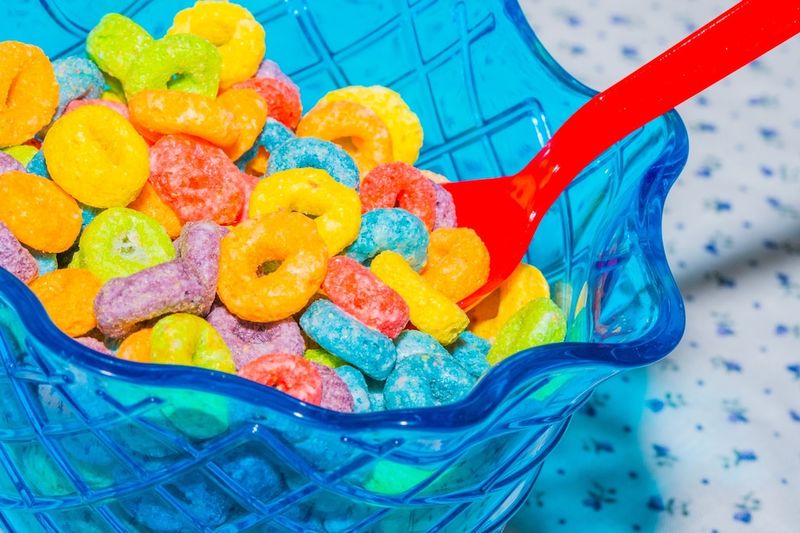
Those colorful boxes featuring cartoon characters and health claims target children but deliver a nutritional nightmare. Many popular cereals contain more sugar per serving than cookies or candy – some packing over 12 grams (3 teaspoons) in a tiny 30-gram portion! The actual serving size listed is typically much smaller than what people actually pour into their bowls. The ‘whole grain’ claims often mask the reality that these grains have been pulverized into flour, raising their glycemic index and reducing fiber benefits. Those vibrant colors come from artificial dyes linked to hyperactivity in children. The ‘fortified with vitamins’ boast refers to synthetic nutrients sprayed onto the cereal during manufacturing – far less beneficial than vitamins from whole foods. Better breakfast alternatives include oatmeal topped with fruit and nuts, Greek yogurt with berries, or whole grain toast with avocado. These options provide sustained energy without the sugar crash, artificial ingredients, and empty calories of processed cereals.
11. Synthetic Swirl: Non-Dairy Creamers

That innocent-looking powder or liquid transforming your coffee contains virtually nothing derived from nature. The creamy white appearance masks a disturbing reality – most non-dairy creamers use vegetable oils that have been hydrogenated to remain solid at room temperature. This process creates trans fats, the most damaging type for heart health, despite labels sometimes claiming ‘zero trans fats’ due to labeling loopholes. The sweet flavor comes from corn syrup solids or other added sugars, while artificial flavors mimic vanilla or hazelnut. Sodium caseinate, a milk derivative, ironically appears in many ‘non-dairy’ versions, creating potential problems for those with milk allergies. The smooth texture and ability to dissolve comes from emulsifiers like dipotassium phosphate and silicon dioxide – essentially, sand. Try unsweetened almond milk, oat milk, or a splash of real cream instead. These natural alternatives provide actual nutrition without the chemical additives and hydrogenated oils that make commercial creamers a concerning daily habit.
12. Salt Bath in a Can: Canned Soups
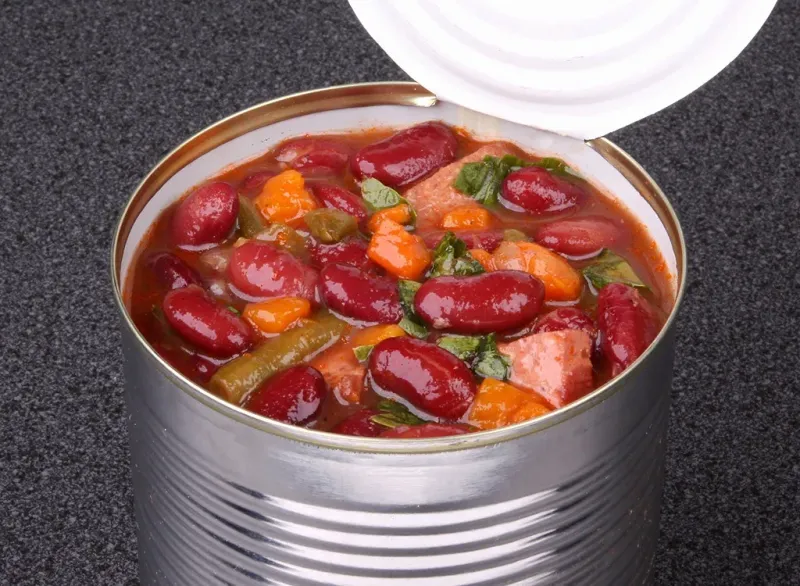
Those convenient soup cans promising homestyle comfort deliver an alarming amount of sodium instead. A typical serving contains 700-900mg of sodium – nearly half your daily recommended limit in one small bowl! The broth base usually contains MSG or yeast extract (hidden MSG) to enhance flavor while allowing manufacturers to reduce costly ingredients like real vegetables and meat. Most canned soups rely on modified food starch and flour as thickeners rather than using adequate vegetables to create natural texture. The vegetables present have typically been cooked at high temperatures during canning, destroying much of their nutritional value. Many varieties also contain added sugars, appearing on ingredients lists as dextrose or corn syrup. Making homemade soup is easier than you might think. Simmer vegetables, beans, or lean meat in low-sodium broth, add herbs and spices, and freeze portions for quick meals. This approach provides genuine nutrition and flavor without the excessive sodium and preservatives found in canned versions.
13. Fruit Imposters: Fruit Snacks and Leather
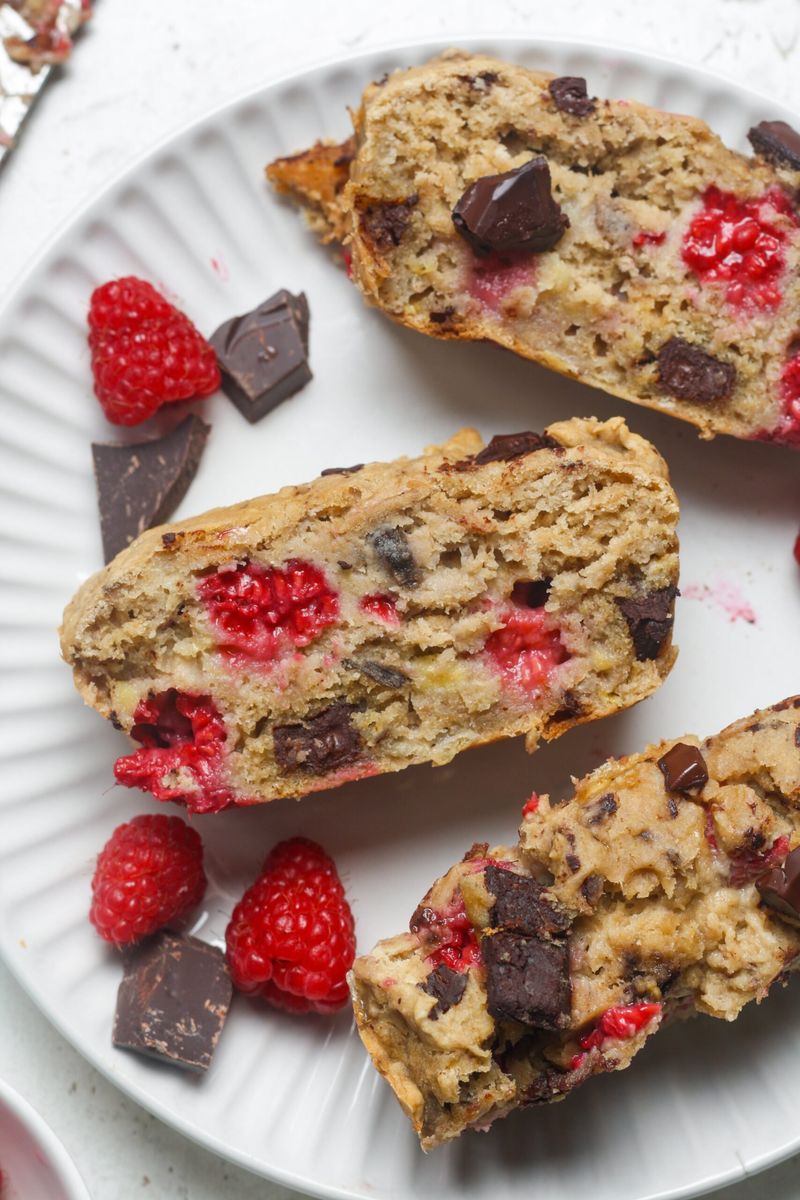
Those chewy, colorful treats shaped like fruits or rolled into strips contain almost no actual fruit. Despite pictures of orchards and fruit baskets on packaging, most fruit snacks list sugar or corn syrup as their first ingredient. The fruit content? Often just enough concentrated juice or puree to justify the name – typically less than 5% of the product. The vibrant colors come from artificial dyes like Red 40 and Blue 1, which research has linked to behavioral issues in some children. The gummy texture results from gelatin or pectin combined with oils and waxes. Unlike real fruit, these snacks contain virtually no fiber, vitamins, or antioxidants – just concentrated sugar in a fruit-shaped delivery system. For healthy alternatives, try freeze-dried fruit with no added sugar, apple slices with cinnamon, or frozen grapes. These natural options satisfy sweet cravings while providing actual nutritional benefits, fiber, and the complex flavors of real fruit without the artificial ingredients and sugar overload.

Leave a comment